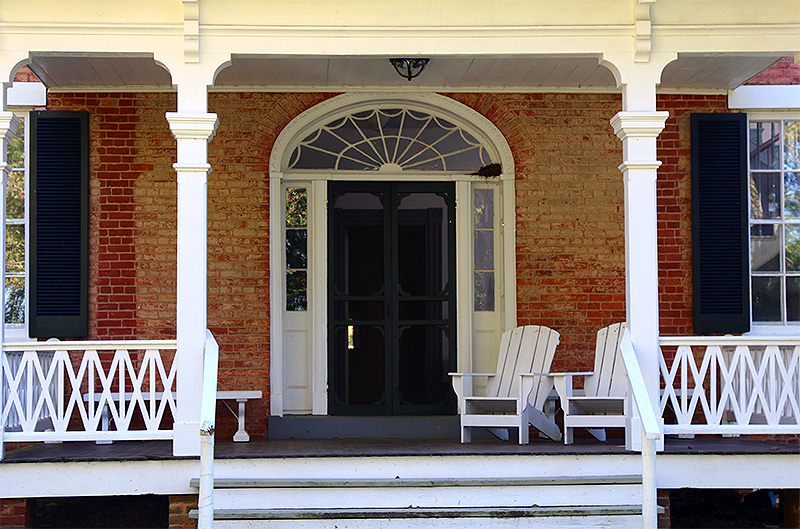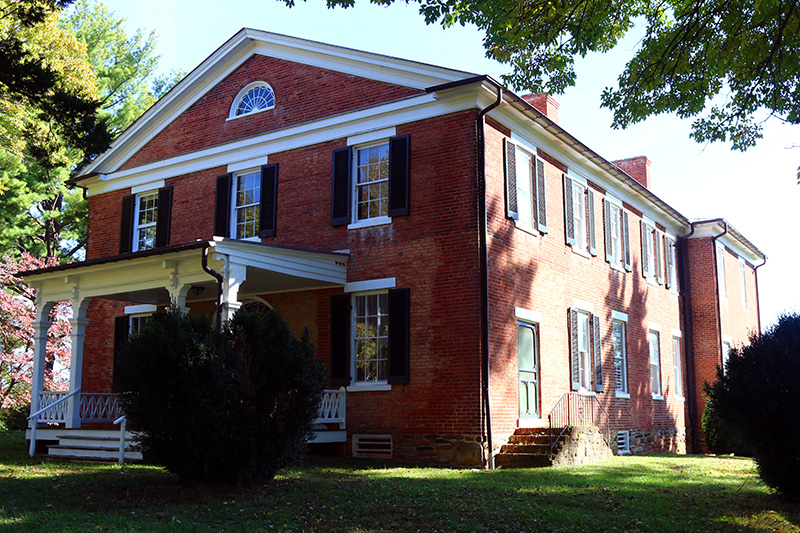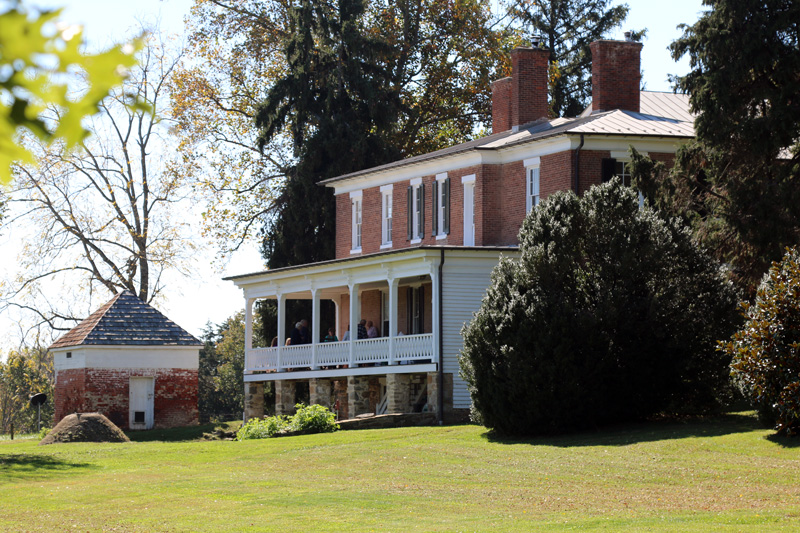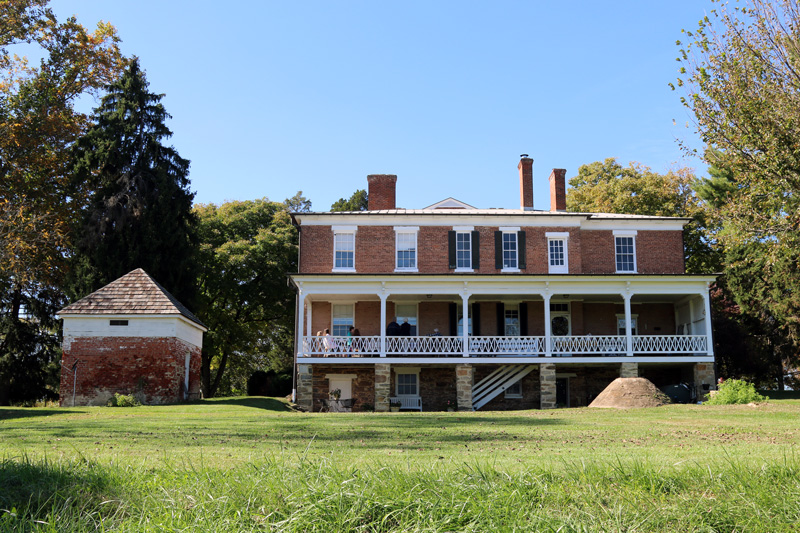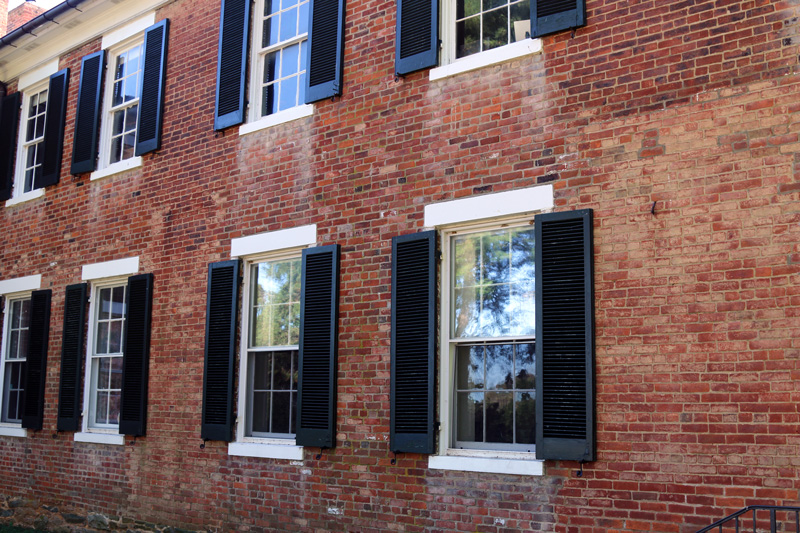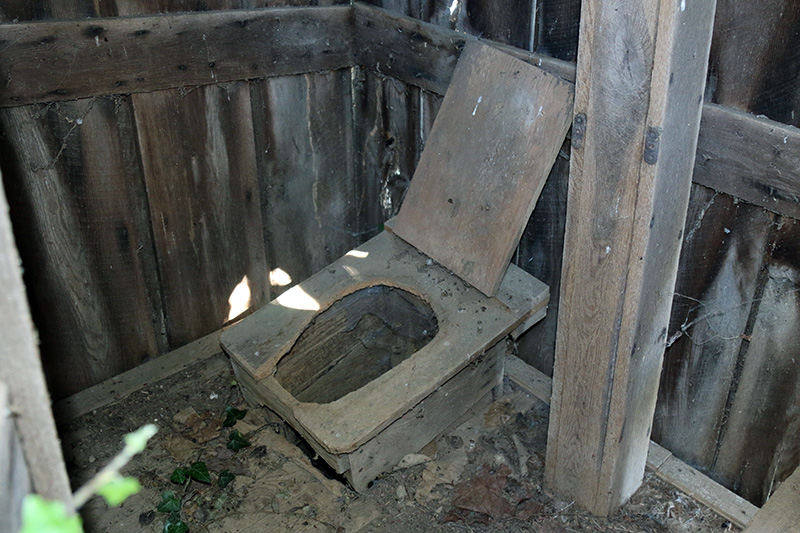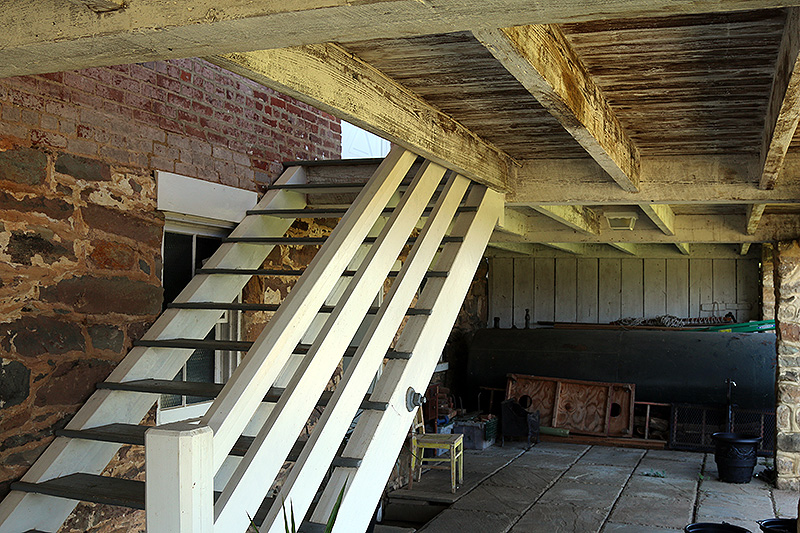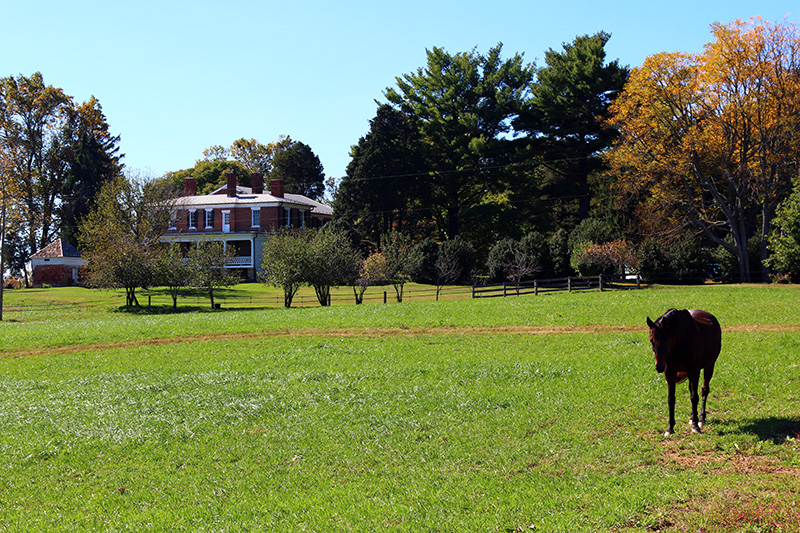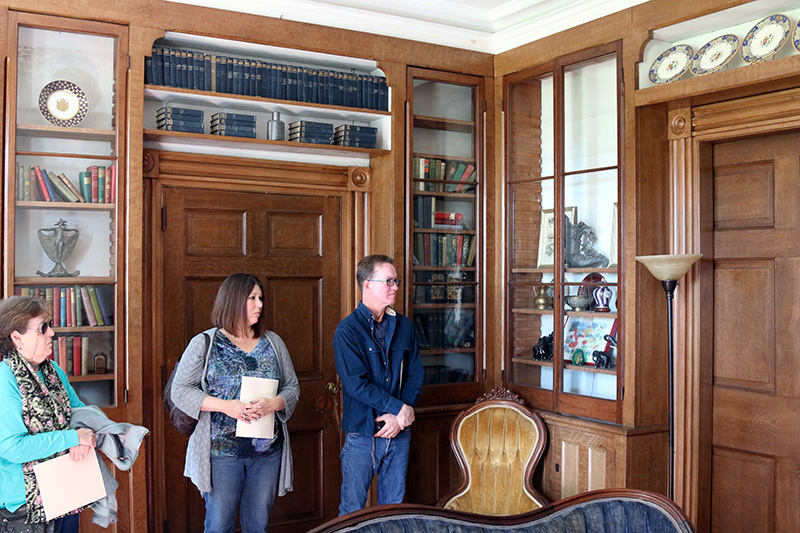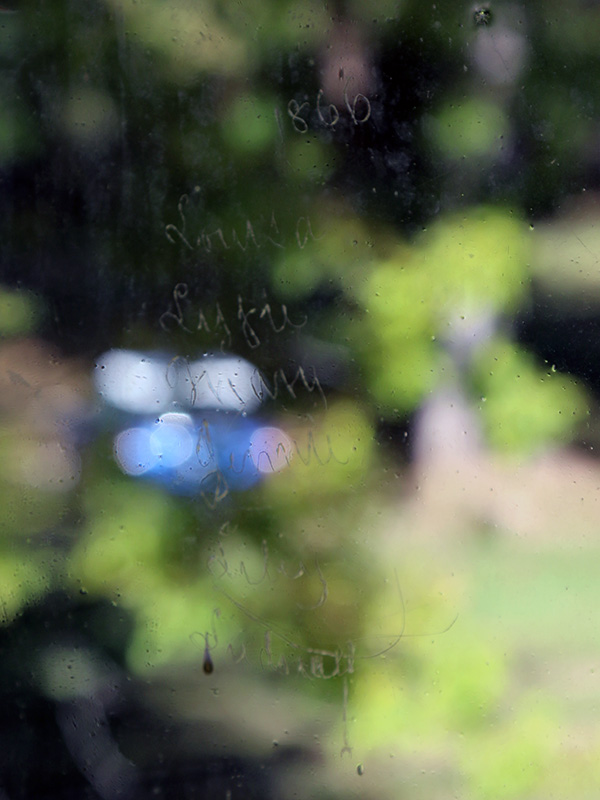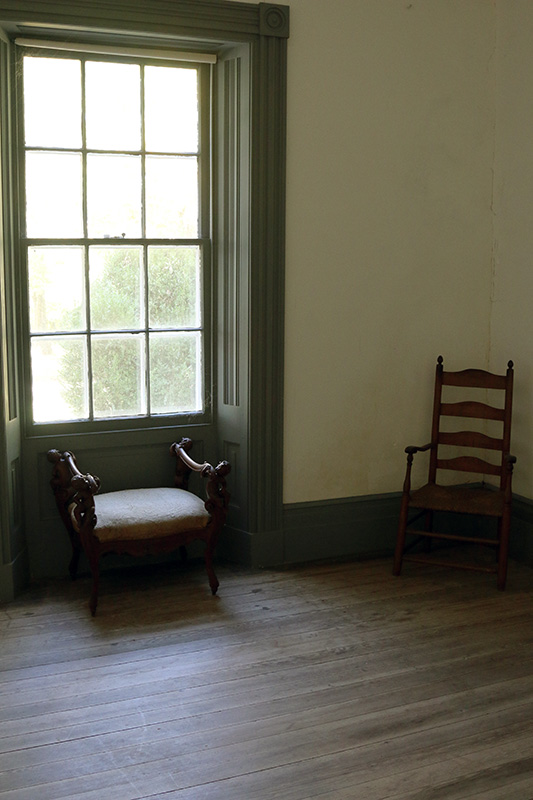
Waveland - Marshall, Virginia
The following text was provided on a print out from the owner, Mr. George R. Thompson Jr., during a special tour of the property on Oct. 11, 2015.
Mr. Thompson was very gracious with his time and provided a great tour of the house and told us some great stories.
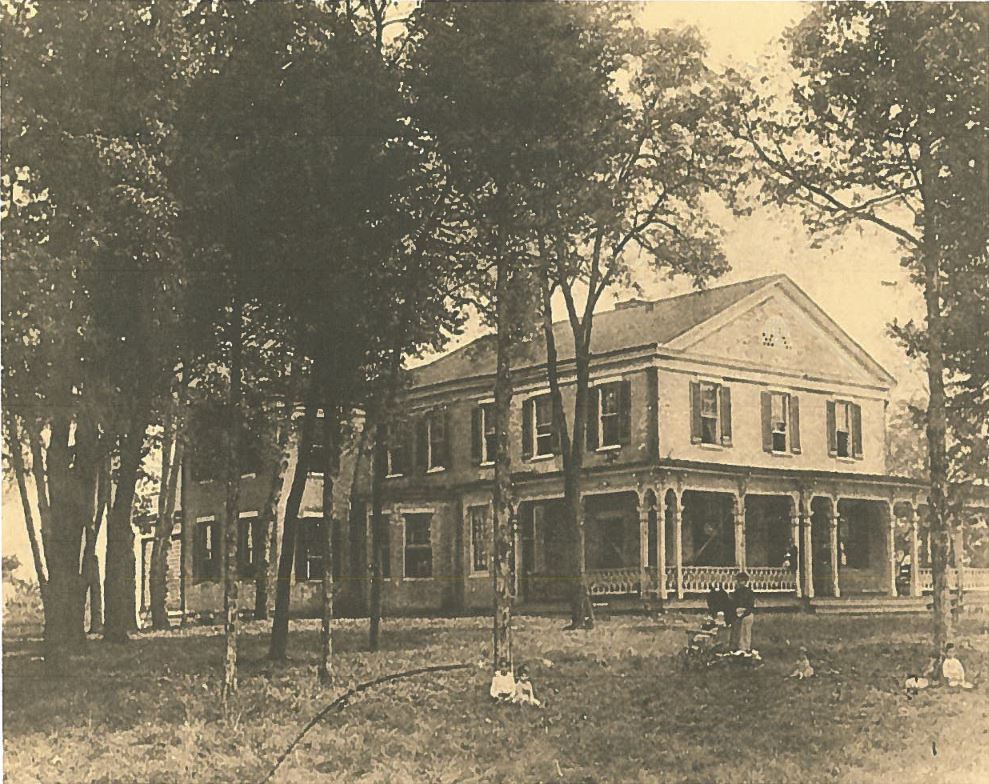
On January 10, 1727, Lord Fairfax provided a sizeable grant to Scottish Rev. Alexander Scott including land in the Carter's Run Valley. At Rev. Scott's death, his nephew, James, inherited the southern-most portion of the grant, and it was James' son, Cuthbert Scott, who built a charming, two story brick house in 1833, with a hallway across the front, four large rooms behind and a similar arrangement on the second floor. This he called Waveland. The name was well chosen for geologists claim this valley was an ancient lakebed consisting of rolling hills and valleys. Tradition claims that "old man Cuth Scott drank it all up in 104 liquor". Be that as it may, in 1806 he sold the property to James Morgan, the former Alexandria Port Collector who was a member of a prominent family. Subsequently, Morgan invested heavily in the canal being built from Fredericksburg to Waterloo. However, he suffered substantial losses when the railroads obsoleted the canal. The Waveland house and farm remained in the Morgan family until James Morgan's death in 1851, when his brother sold Waveland to Bedford Brown, a member of the Unites States Senate from North Carolina.
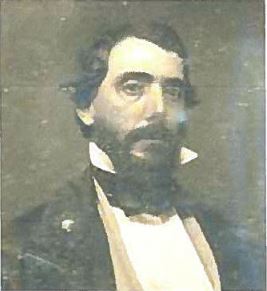 John Augustine Washington III (pictured to the left), George Washington's great-great nephew, purchased Waveland in 1859, shortly after he sold Mt. Vernon to the Mt. Vernon Ladies Association. Legend has it that Washington brought several dozen slaves to Waveland, including many males over six feet tall, which terrorized the countryside (1861 census denotes 39 including women and children).
John Augustine Washington III (pictured to the left), George Washington's great-great nephew, purchased Waveland in 1859, shortly after he sold Mt. Vernon to the Mt. Vernon Ladies Association. Legend has it that Washington brought several dozen slaves to Waveland, including many males over six feet tall, which terrorized the countryside (1861 census denotes 39 including women and children).
Washington made many changes in the house. With brick burned on the place he added an addition on the rear that more than doubled its size. He tore off the original small colonial entrance porch and built an ornate porch across the entire front of the house, extending around each side past the doors at either end of the front hall. He added a bay window in each of the four front rooms, supporting the walls with 12" x 12" oak timbers. With time, these began to give way letting the walls above sag. In 1928, the bay windows were removed and the original windows restored. The front wrap around porch was removed in 1938.
The beautiful marble mantels were presumably installed by John Augustine Washington. The rooms and the front hall have handsome cornices made of molded plaster, and the center of each of the ceilings in the two front rooms have elaborate plaster medallions, presumably planned for chandeliers. The locks, hinges and all of the hardware are original. The windows have inner blinds as well as outside shutters, and the window sills and lentils in both the old and new section are of white stone, as are the door sills. The graceful stairway is framed with a circular, mahogany hand rail. Seven chimneys provide each room with a fire place and the bedrooms have clothes closets on either side of the chimneys.
The front southern room is lined with faux bois bookcases to accommodate some of Mount Vernon's papers. In the master bedroom, part of the new addition at the rear, Washington installed a large walk in safe, or vault, with double iron doors which were originally painted with decorative flowers, vines and shrubs. During the War Between the States, the silver was removed to Kinloch in The Plains and placed in the pigeon cote to avoid potential looting by the Yankees.
Probably the most interesting additions to the house were the three bathrooms, paneled head high and containing the usual fixtures with the sole exception of a commode. The family "four holer" was located to the rear. Regrettably, the large 3" x 12" oak seater was destroyed in a 1950 clean up. These bathrooms were installed by the plumber that had but recently put plumbing in the White House. One has been preserved in its original condition, though not functional. The six foot long copper tub is quite narrow, with a top edge wood rim. The sides are of paneled wood, so it is boxed in so to speak. All of this rests on a low drainage platform with a raised edge extending 8" to 10" wider than the tub. Supposedly this was to catch any splash. There is even a shower with a filigree fin head. The lavatory is marble with a paneled cupboard underneath. A ceramic latrine is affixed to the wall. Lead piping required no tees or ells as the pipe itself was bent or curved to go in the desired direction.
 To supply these modern conveniences with water, they were connected to a large lead lined tank in the attic. A 1,322 gallon circular brick cistern, 15' wide and 18' deep, with a domed brick top, was located in the back yard. The downspouts from the house guttering were piped to this which is still in useful condition and is used as a potential fire reservoir. In addition, there was a windmill in the field to the north of the house where a spring with an enormous flow - some say as large as a man's wrist.
To supply these modern conveniences with water, they were connected to a large lead lined tank in the attic. A 1,322 gallon circular brick cistern, 15' wide and 18' deep, with a domed brick top, was located in the back yard. The downspouts from the house guttering were piped to this which is still in useful condition and is used as a potential fire reservoir. In addition, there was a windmill in the field to the north of the house where a spring with an enormous flow - some say as large as a man's wrist.
 Several of the Washington girls and some of their friends provided an inscription in 1866 on an upstairs bedroom window pane. Presumably, Louisa Fontaine Washington, the oldest, served as an engraver with a family diamond ring.
Several of the Washington girls and some of their friends provided an inscription in 1866 on an upstairs bedroom window pane. Presumably, Louisa Fontaine Washington, the oldest, served as an engraver with a family diamond ring.
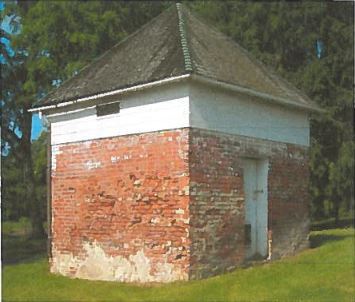 The meat house, located to the south-east corner of the back porch, 1 was apparently built in 1833, as the bricks closely match those on the front portion of the house. It is interesting to observe that the quality of the bricks in the meat house are not quite up to the standard of the house bricks,and thus one can readily conclude that soft bricks and those with
imperfections were used for outbuildings. The original brick structure was covered with a red whitewash. Further, each joint was lined with a narrow, penciled orange line, providing a most decorative outbuilding. The red and the orange are still barely discernable. Apparently the lower 3 - 4 feet of soft brick began to deteriorate and a stucco coating was applied in the early 1900's using cement. Tragically, this served to hold moisture inside and thus, accelerated the decay of the bottom 4 feet of all four sides of the structure. Restoration plans are in order.
The meat house, located to the south-east corner of the back porch, 1 was apparently built in 1833, as the bricks closely match those on the front portion of the house. It is interesting to observe that the quality of the bricks in the meat house are not quite up to the standard of the house bricks,and thus one can readily conclude that soft bricks and those with
imperfections were used for outbuildings. The original brick structure was covered with a red whitewash. Further, each joint was lined with a narrow, penciled orange line, providing a most decorative outbuilding. The red and the orange are still barely discernable. Apparently the lower 3 - 4 feet of soft brick began to deteriorate and a stucco coating was applied in the early 1900's using cement. Tragically, this served to hold moisture inside and thus, accelerated the decay of the bottom 4 feet of all four sides of the structure. Restoration plans are in order.
Washington brought two Mount Vernon rare, deciduous Magnolias which he planted at either corner of the front of the house. These trees survived until the mid-1930's. Tradition has it that Washington planted the sole Pecan tree in the back yard, which survived until 2006, and reached approximately 90' in height. Possibly this was a descendant of the Mt. Vernon pecan trees.
 A porch, restored in 2005 using lumber originally cut in the 1850's timeframe, extends across the entire back of the house, 70 - 80' long, with a modified Chippendale railing. As the ground slopes away, the porch provides a covered entrance to the basement rooms, each of which have fireplaces, one with a crane which obviously was the kitchen. A dumbwaiter, which was removed in the 1938 restoration, seemed to connect the adjoining basement room with the dining room.
A porch, restored in 2005 using lumber originally cut in the 1850's timeframe, extends across the entire back of the house, 70 - 80' long, with a modified Chippendale railing. As the ground slopes away, the porch provides a covered entrance to the basement rooms, each of which have fireplaces, one with a crane which obviously was the kitchen. A dumbwaiter, which was removed in the 1938 restoration, seemed to connect the adjoining basement room with the dining room.
The basement was also used as a wine cellar during Washington's residence. During The War Between the States, General Louis Blenker and his Dutch regiment camped in this area for three days, held up by heavy snow on their way to the Valley of Virginia to attempt to intercept General Stonewall Jackson. As they were plundering ruthlessly, the caretaker at Waveland removed all of the wines and liquors, putting them in a huge, barrel shaped wooden vat, or hogshead container, piling empty bottles on top. When General Blenker's men saw the empty bottles, they were said to have picked them up and hurl them, cursing violently. Thus, Washington's fine libations were saved.
The lawn must have been lovely, as the circular driveway was edged with flat stones with an alley from the gate to the house. The slave quarters consisted of a large house southeast of the mansion with a central chimney to supply heat. Washington, or one of his predecessors, also built a huge 80' x 30' horse barn of logs, some of them 30' in length, two stories high, which, over time, became unsound and was torn down in the 1940's.
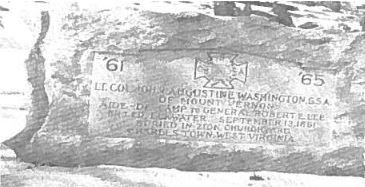 John Augustine Washington III enlisted in the Confederate cause and served as Lee's Aide-de-Camp. In the campaign against the Federals he was killed at the age of 40 at Elkwater, West Virginia on September 13, 1861. On October 30th, Lt. Col. Washington's Will was probated in Warrenton. His wife, Eleanor Love Seldon Washington, died in 1860 from childbirth. Both were said to have been buried below the mansion, toward the southeast. Later their bodies were exhumed and interred in Charles Town, West Virginia, where his brother, Richard B. Washington, lived. Richard qualified as guardian for the eight orphaned Washington children, and later moved them from Waveland to his home, Blakeley, in Charles Town, West Virginia.
John Augustine Washington III enlisted in the Confederate cause and served as Lee's Aide-de-Camp. In the campaign against the Federals he was killed at the age of 40 at Elkwater, West Virginia on September 13, 1861. On October 30th, Lt. Col. Washington's Will was probated in Warrenton. His wife, Eleanor Love Seldon Washington, died in 1860 from childbirth. Both were said to have been buried below the mansion, toward the southeast. Later their bodies were exhumed and interred in Charles Town, West Virginia, where his brother, Richard B. Washington, lived. Richard qualified as guardian for the eight orphaned Washington children, and later moved them from Waveland to his home, Blakeley, in Charles Town, West Virginia.
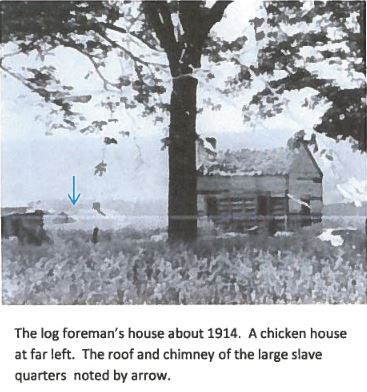 Washington engaged a local farm manager, James Thomas Ford, who was housed in a "2 up, 2 down" small farm house located in the field just south of Waveland. Ford's son, Robert "Bob" Newton Ford, was reportedly so bad that when he went to town, his mother sewed up his pant pockets so he would not steal so much. The Ford family departed Waveland for the West soon after The War, and Bob elected to go into business with the James boys. Subsequently, he gained considerable notoriety when he shot his friend Jesse, and hence The Ballad of Jesse James, "that dirty little coward that shot Mr. Howard".
Washington engaged a local farm manager, James Thomas Ford, who was housed in a "2 up, 2 down" small farm house located in the field just south of Waveland. Ford's son, Robert "Bob" Newton Ford, was reportedly so bad that when he went to town, his mother sewed up his pant pockets so he would not steal so much. The Ford family departed Waveland for the West soon after The War, and Bob elected to go into business with the James boys. Subsequently, he gained considerable notoriety when he shot his friend Jesse, and hence The Ballad of Jesse James, "that dirty little coward that shot Mr. Howard".
 Lawrence Washington, the oldest son of John Augustine, came into possession of Waveland by inheritance and by purchase from his younger brother, George. Lawrence married Fannie Lackland and returned to Waveland, where nine of their twelve children were born and raised. Not proving to be a successful farmer, Lawrence was heavily in debt by 1895. An 85 page farm diary exists describing the daily activities and economics of farming at Waveland from July 1885 to January 1889.
Lawrence Washington, the oldest son of John Augustine, came into possession of Waveland by inheritance and by purchase from his younger brother, George. Lawrence married Fannie Lackland and returned to Waveland, where nine of their twelve children were born and raised. Not proving to be a successful farmer, Lawrence was heavily in debt by 1895. An 85 page farm diary exists describing the daily activities and economics of farming at Waveland from July 1885 to January 1889.
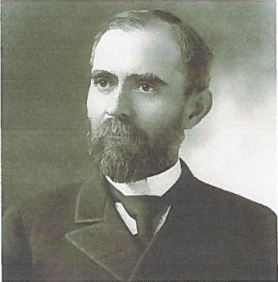 Bedford Glascock, of Upperville, VA, purchased Waveland in May 1895 when he was 45 years old, the same year his photograph was taken. It is still in the possession of his descendants some 118 years later.
Bedford Glascock, of Upperville, VA, purchased Waveland in May 1895 when he was 45 years old, the same year his photograph was taken. It is still in the possession of his descendants some 118 years later.
In August 2004, Waveland (as seen below), was placed on the National Register of Historic Places, and it remains essentially unchanged since the days of Washington.
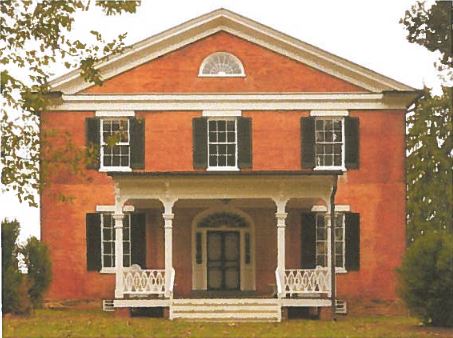
PDF version of this write up
Pictures
Pictures taken Oct. 11, 2015.
Interior

